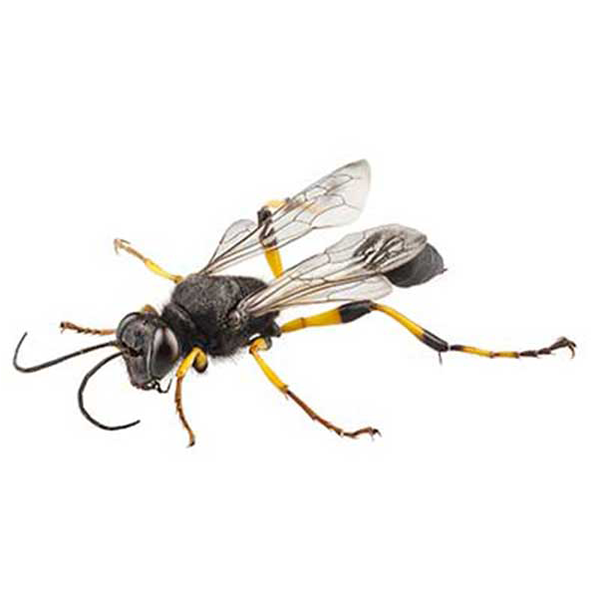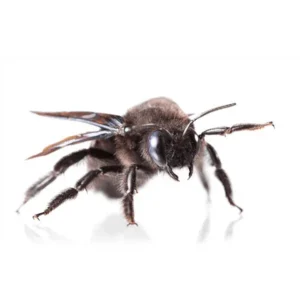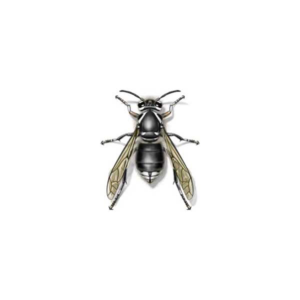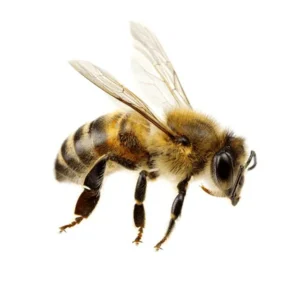Mud Dauber Identification
What Do Mud Daubers Look Like?
Mud daubers are slender, solitary wasps with long, narrow bodies. They typically have a dark metallic blue or black coloration with yellow and orangish markings. Their appearance can vary slightly depending on the species, but they generally have a distinct narrow waist and long, slender legs. Mud daubers are known for their habit of building nests out of mud, which gives them their name. These nests are typically constructed in sheltered locations such as under eaves, bridges, or other protected areas.
Signs of a Mud Dauber Infestation
Signs of a mud dauber infestation include the presence of their characteristic mud nests, which are often found attached to walls, ceilings, or other structures. These nests are typically cylindrical or elongated in shape and may vary in size depending on the species. Additionally, you may notice an increase in mud dauber activity around the area where the nests are located, as they come and go to provision the nests with prey for their larvae. If you observe multiple mud dauber nests in or around your property, it may indicate an infestation that requires attention. Contact us today for our wasp and bee pest control.
Habitat, Diet, Life Cycle & Stings
Where Do Mud Daubers Live?
Mud daubers live in nests constructed by the female population of the colony. Mud daubers build cylindrical nests that look much like organ pipes. Nests consist of short mud tubes constructed side by side and are most often located in shaded areas like porch ceilings, under eaves, or in sheds and barns.
Diet of a Mud Dauber
Mud daubers feed on nectar and pollen, which they gather from flowers using their long mouthparts. Unlike many other wasp species, mud daubers do not feed on other insects as adults. Instead, they provision their nests with paralyzed spiders, which serve as food for their developing larvae. Mud daubers are efficient hunters and target a variety of spider species, including orb-weavers and wolf spiders. They sting and paralyze the spiders, then carry them back to their nests where they lay eggs on or near the prey for their larvae to consume.
Life Cycle of a Mud Dauber
The life cycle of a mud dauber begins when a female constructs a mud nest, typically in a sheltered location. She collects wet mud, forms it into cells, and lays an egg inside each cell. The female then captures and paralyzes spiders, which she places inside the cells as food for the developing larvae. After provisioning the nest, she seals the cells with mud. The larvae hatch from the eggs and feed on the paralyzed spiders. They undergo several molts before pupating inside the nest. Eventually, adult mud daubers emerge from the pupae, completing the life cycle.
Do Mud Daubers Sting?
Mud daubers are generally not aggressive and are less likely to sting humans compared to other wasp species. However, they are capable of stinging if they feel threatened or if they are handled roughly. Mud dauber stings are typically mild and cause localized pain, swelling, and redness similar to other insect stings.
Are Mud Daubers Dangerous?
Mud daubers do not defend their nests and are rarely aggressive. These wasps are beneficial insects as they reduce spider populations. Although mud daubers aren’t dangerous, they can still be a nuisance when nesting in or near your home. If a nest is found on your property, nest removal should always be handled by a professional wasp control company, as any wasp handling can be dangerous.
Mud Dauber Prevention Tips
To prevent mud dauber infestations, seal any cracks or openings in your home where they might gain entry, keep doors and windows screened to prevent their access, and remove sources of standing water, as mud daubers use moist mud for nest construction.
Additionally, discourage spider populations around your property by keeping vegetation trimmed and removing debris where spiders may hide. It’s a good idea to regularly inspect your property for mud dauber nests, especially in sheltered areas. For safe removal, contact our expert wasp and bee professionals.
Need help with Mud Daubers control?
FAQs
Are Mud Daubers as Aggressive as Wasps?
Mud daubers are generally less aggressive than some other wasp species. They are solitary wasps and typically do not defend their nests aggressively like social wasps such as yellow jackets or hornets. Mud daubers are known to be relatively docile and are less likely to sting humans unless they feel threatened or provoked. However, like all wasps, they may sting if they perceive a threat to themselves or their nests, so it’s essential to exercise caution around them and their nests.
Are Mud Daubers Good for Anything?
Yes, mud daubers play a beneficial role in ecosystems. They are efficient hunters of spiders, which they use as food to provision their nests for their developing larvae. By preying on spiders, mud daubers help control their populations, which can be beneficial in managing pest insects that spiders prey upon. Additionally, mud daubers are important pollinators as they visit flowers to feed on nectar, aiding in the pollination of various plant species.





